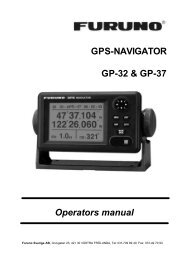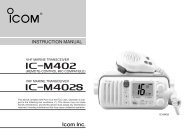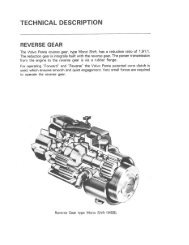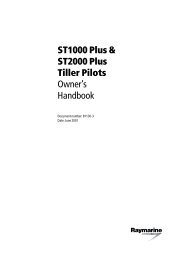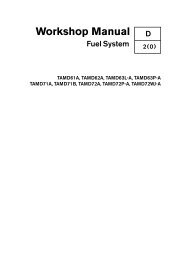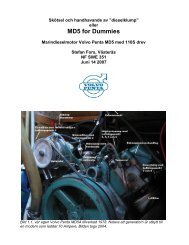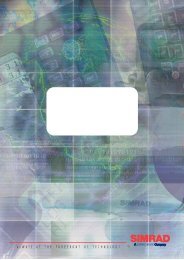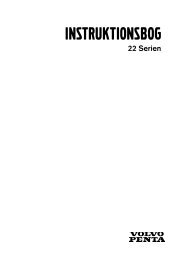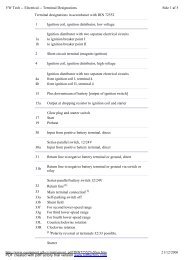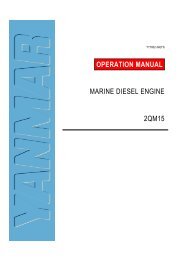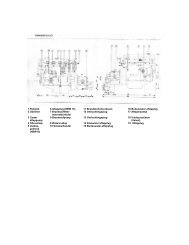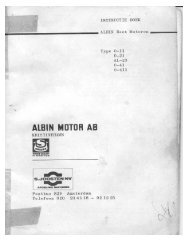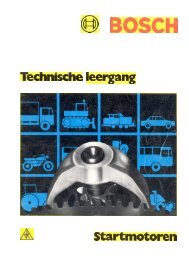You also want an ePaper? Increase the reach of your titles
YUMPU automatically turns print PDFs into web optimized ePapers that Google loves.
56 CHAPTER THREE<br />
flush it down a drain or pour it on the<br />
ground. Put it in suitable containers and<br />
dispose of it according to local regulations.<br />
CA UTION<br />
Be careful not to spill antifreeze on painted<br />
surfaces, as it may damage the surface.<br />
Wash any spilled antifreeze immediately<br />
with soapy watel; then rinse the area thoroughly<br />
with clean water:<br />
Flushing and refilling freshwater coolant system<br />
Use the following procedure to flush and refill the<br />
freshwater coolant system. Refer to the preceding section<br />
to flush the seawater portion of a freshwater coolant system.<br />
Replace the coolant in the freshwater coolant system after<br />
every 500 hours of operation or annually, whichever<br />
occurs first.<br />
CA UTION<br />
Perform the following procedure when the<br />
engine is cold.<br />
1. Remove the pressure fill cap (Figure 24).<br />
NOTE<br />
Position the drain hoses in suitable containers<br />
to catch coolant when draining the coolantfrom<br />
the exhaust manifold and engine.<br />
2. Open the drain valve at the end of the heat exchanger<br />
(A, Figure 27) and the drain plug on the underside of the<br />
exhaust manifold (B).<br />
3. Unscrew the drain plug on the side of the engine block<br />
(Figure 28, typical).<br />
4. If an excessive accumulation of scale is apparent on<br />
the interior of the cooling system, use an automotive cooling<br />
system cleaner. Be sure to thoroughly flush out the<br />
cooling system with freshwater afterward.<br />
5. Close the drain plug on the exhaust manifold and the<br />
drain plug on the engine block.<br />
6A. Engines without a remote reservoir-Fill the exhaust<br />
manifold with coolant. The coolant should be level with<br />
the iron plate at the bottom of the filler neck.<br />
6B. Engines with a remote reservoir-Pour coolant into<br />
the exhaust manifold so it is full. Install the pressure fill<br />
cap, then add coolant to the remote reservoir tank to the<br />
proper level.<br />
7. Run the engine until it reaches normal operating temperature,<br />
then let the engine cool. Recheck the coolant<br />
level and, if necessary, add coolant.<br />
BATTERY<br />
Inspect the electrical connections and make sure they<br />
are secure and corrosion-free. If corrosion is present at the<br />
terminal ends, detach the wires, clean the corrosion and<br />
reattach. Make sure that wires are correctly routed and<br />
will not contact moving parts or touch hot (especially exhaust)<br />
parts.<br />
Remove the battery vent caps and check battery electrolyte<br />
level. It should be about 3/16 in. above the plates or<br />
even with the bottom of the filler wells. See Figure 29.<br />
Test the battery condition with a hydrometer (Figure 30).<br />
See Chapter Nine.




